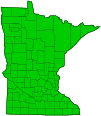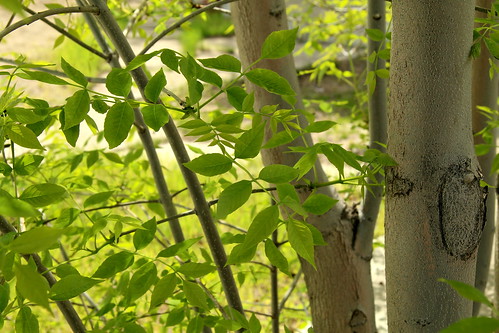green ash
(Fraxinus pennsylvanica)
Conservation • Wetland • Description • Habitat • Ecology • Use • Distribution • Taxonomy
Description |
||
Green ash is a fast-growing deciduous tree. In Minnesota mature trees are usually 40′ to 60′ tall and 18″ to 24″ in diameter at breast height. Large individuals can reach over 80′ in height and 38″ in diameter. It is a moderately long-lived tree. The size and form are variable. It may appear as a shrub or a tree. When it is a tree the trunk may be leaning, twisted, or straight. It rises from a shallow, wide-spreading root system. The crown is dense and usually rounded, sometimes irregular. The branches are upright. The bark on young trees is smooth or slightly flaky, and is brown to dark gray with reddish streaks. As it ages it develops firm, narrow, raised, corky ridges. The ridges are interlaced and form a diamond-shaped pattern. The twigs are moderately stout, round or oval in cross section, greenish-gray to reddish-brown, with light-colored dots (lenticels). First season twigs are densely hairy, velvety to the touch. They are less hairy in the winter. The buds are reddish-brown, small, rounded, and covered with fine hairs. The terminal bud is ⅛″ to 5 ⁄16″ long, reddish-brown, and hairy. The uppermost pair of lateral buds occurs at the base of the terminal bud. The leaf scars are half-round and are straight along the upper edge, like a capital letter D lying on its side. The leaves are deciduous, opposite, and pinnately compound. They are 6″ to 12″ long and are divided into 5 to 9, usually 7, leaflets. The central stalk of the compound leaf is hairy. The leaflets are all stalked. They are arranged in opposite pairs with 1 terminal leaflet. They are lance-shaped, 2¾″ to 5″ long, and 1″ to 1¾″ wide. They are tapered at the base and taper to a point at the tip. The upper surface is yellowish green and hairy to hairless. The lower surface is paler green and densely hairy. The margins are finely toothed above the middle, untoothed near the base. In autumn they turn yellowish-brown and are shed as individual leaflets, not entire leaves. The tips of the leaflets do not droop. Male and female flowers are borne on separate trees. They are borne in branched clusters over the outer part of the crown. They are purplish, small, and inconspicuous, and have no petals. They appear in late April to early May just before or at the same time as the leaves. The fruit is a 1″ to 2″ long, ⅛″ to 5 ⁄16″ wide samara consisting of a flattened seed case with a dry, flattened, papery, wing. The wing is pointed or notched at the tip, and encloses half or more of the seed case. The seed case is nearly as thick as wide, more than 7½ times as long as wide, and much thicker than the wing. It contains a single seed. The samara ripens from late September to early October and is dispersed from October throughout the winter. |
||
Height |
||
40′ to 60′ |
||
Record |
||
The champion green ash in Minnesota is on public property near the Minnesota Landscape Arboretum in Carver County. In 2021 it was measured at 112.5′ tall and 184″ in circumference (58.6″ in diameter), with a crown spread of 60′. |
||
Flower Color |
||
|
||
Similar Species |
||
Blue ash (Fraxinus quadrangulata) twigs are 4-angled, or winged. Black ash (Fraxinus nigra) twigs are hairless. The leaf scars are elliptic to oval. The terminal bud is distinctly separated on the twig from the uppermost pair of flowering buds. The leaves have 7 to 11, sometimes 13, leaflets. The tips of the leaflets tend to droop. The wing of the samara extends to or almost to the base of the seed case. White ash (Fraxinus americana) leaf scars are deeply notched at the top. The leaflets are pale or whitish on the underside. |
||
Habitat |
||
Highly adaptable, but prefers moist bottomlands. |
||
Ecology |
||
Flowering |
||
Late April to early May |
||
Pests and Diseases |
||
Ash bead gall mite (Aceria fraxini) causes small, greenish-yellow galls on the leaves of ash trees. The galls are sometimes numerous and are scattered randomly on lateral veins. Ash flower gall mite (Aceria fraxiniflora) causes the growth of a dense, cauliflower-like cluster of flower buds on the inflorescence stalk of male ash trees and trees with hermaphroditic flowers (with both male and female functional parts). They are green at first, eventually turning brown. Mycosphaerella Leaf Spot (Mycosphoerello effiguroto) produces tiny, 1 ⁄32″ to ⅛″ in diameter spots on the upper leaf surface. The spots are yellow at first soon turning dark purple. Phyllosticta Leaf Spot (Mycosphoerello fraxinicola) produces irregular, ⅜″ to ⅝″ in diameter spots on the upper leaf surface. The spots are pale green at first, soon turning dark purple with a tiny tan center, eventually turning light brown or tan by early September. |
||
Use |
||
|
||
Distribution |
||||
|
Sources |
|||
| 4/30/2023 | ||||
Nativity |
||||
Native |
||||
Occurrence |
||||
Widespread, common, and abundant |
||||
Taxonomy |
|||
| Kingdom | Plantae (Plants) | ||
| Division | Tracheophyta (Vascular Plants) | ||
| Subdivision | Spermatophytina (Seed Plants) | ||
| Class | Magnoliopsida (Dicots) | ||
Order |
Lamiales (Mints, Plantains, Olives, and Allies) | ||
Family |
Oleaceae (olive) | ||
| Tribe | Oleeae | ||
| Genus | Fraxinus (ashes) | ||
| Section | Melioides | ||
Subordinate Taxa |
|||
Two varieties have been described: red ash (var. pennsylvanica), with hairy leaves and broad leaflets; and green ash (var. lanceolata), with hairless leaves and narrower leaflets. However, the two varieties intergrade completely, and most taxonomists reject the distinction. |
|||
Synonyms |
|||
Fraxinus campestris Fraxinus darlingtonii Fraxinus lanceolata Fraxinus pennsylvanica var. austinii Fraxinus pennsylvanica var. integerrima Fraxinus pennsylvanica var. lanceolata Fraxinus pennsylvanica var. subintegerrima Fraxinus smallii |
|||
Common Names |
|||
green ash red ash swamp ash water ash |
|||
Glossary
Lenticel
A corky, round or stripe-like, usually raised, pore-like opening in bark that allows for gas exchange.
Pinnate
On a compound leaf, having the leaflets arranged on opposite sides of a common stalk. On a bryophyte, having branches evenly arranged on opposite sides of a stem.
Samara
A dry fruit consisting of a seed attached to a papery wing; one seeded in Elms and Ashes, two-seeded in Maples.
Visitor Photos |
|||||
Share your photo of this plant. |
|||||
| This button not working for you? Simply email us at info@MinnesotaSeasons.com. Attach one or more photos and, if you like, a caption. |
|||||
|
|||||
MinnesotaSeasons.com Photos |
|||||
Tree |
|||||
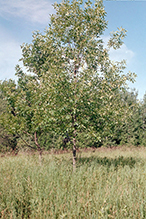 |
|||||
Bark |
|||||
 |
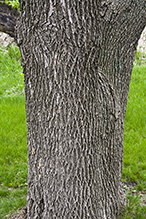 |
||||
Inflorescence |
|||||
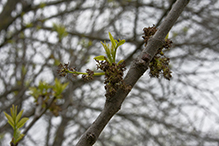 |
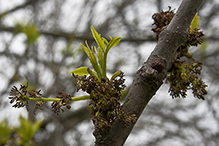 |
||||
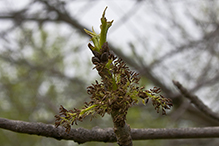 |
|||||
Bud |
|||||
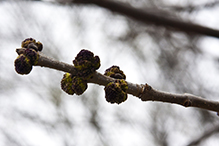 |
|||||
Leaf |
|||||
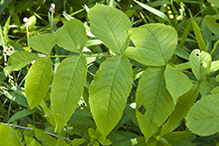 |
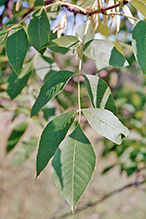 |
||||
Leaflet |
|||||
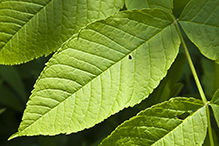 |
|||||
Rachis |
|||||
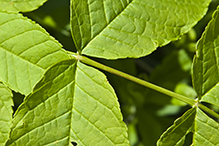 |
|||||
Infructescence |
|||||
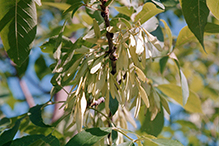 |
|||||

Visitor Videos |
|||
Share your video of this plant. |
|||
| This button not working for you? Simply email us at info@MinnesotaSeasons.com. Attach a video, a YouTube link, or a cloud storage link. |
|||
Other Videos |
|||
| How to tell White, Black, & Green Ash Apart Gregor Wilke |
|||
About
Published on Aug 27, 2012 A tutorial of how to tell the America's 3 most common Eastern Ash trees apart. Fraxinus nigra (Black Ash) Fraxinus pennsylvanica (Green Ash) and Fraxinus americana (White Ash) can be confusing to tell apart to the average eye. This tutorial is designed to point out the main differences between the trees, so that after a bit of practice anyone can I.D. these trees in the field, or in their yard. Knowing what kind of ash tree you have, or are dealing with may be especially important with the onset of Emerald Ash Borer and determining what value your ash trees may hold. Check out my other tutorials! |
|||
| Trees with Don Leopold - green ash ESFTV |
|||
About
Uploaded on Nov 4, 2011 No description available. |
|||

Visitor Sightings |
|||||
Report a sighting of this plant. |
|||||
| This button not working for you? Simply email us at info@MinnesotaSeasons.com. Be sure to include a location. |
|||||
|
|||||
MinnesotaSeasons.com Sightings |
|||||
Avon Hills Forest SNA, North Unit Bertram Chain of Lakes Regional Park Cannon River Turtle Preserve SNA Carpenter St. Croix Valley Nature Center Charles A. Lindbergh State Park Clifton E. French Regional Park Clinton Falls Dwarf Trout Lily SNA Forestville/Mystery Cave State Park Hardscrabble Woods / MG Tusler Sanctuary Kellogg Weaver Dunes SNA, Kellogg Weaver Unit Lake Alexander Woods SNA, South Unit Margherita Preserve-Audubon Prairie Mary Schmidt Crawford Woods SNA Minnesota Valley NWR, Chaska Unit Minnesota Valley NWR, Rapids Lake Unit Minnesota Valley NWR, Wilkie Unit Minnesota Valley State Recreation Area, Lawrence Unit Mound Spring Prairie SNA, North Unit Nerstrand Big Woods State Park Northern Tallgrass Prairie NWR, Touch the Sky Prairie Unit P.N. and G.M. Nelson Wildlife Sanctuary Pembina Trail Preserve SNA, Crookston Prairie Unit Prairie Creek WMA, Koester Prairie Unit Robert Ney Memorial Park Reserve Sand Prairie Wildlife Management and Environmental Education Area Stanley Eddy Memorial Park Reserve |
|||||

|
Created: Last Updated: © MinnesotaSeasons.com. All rights reserved. |
